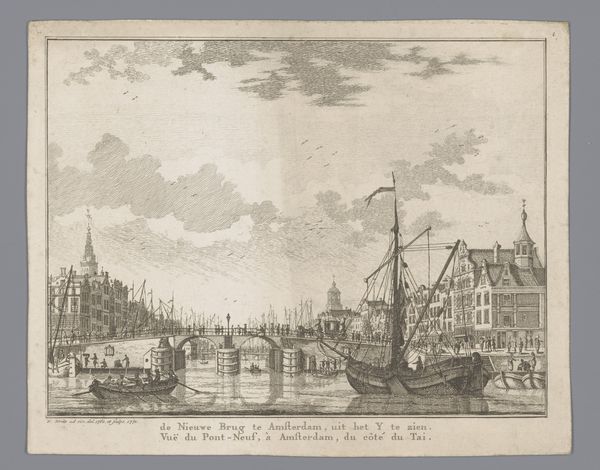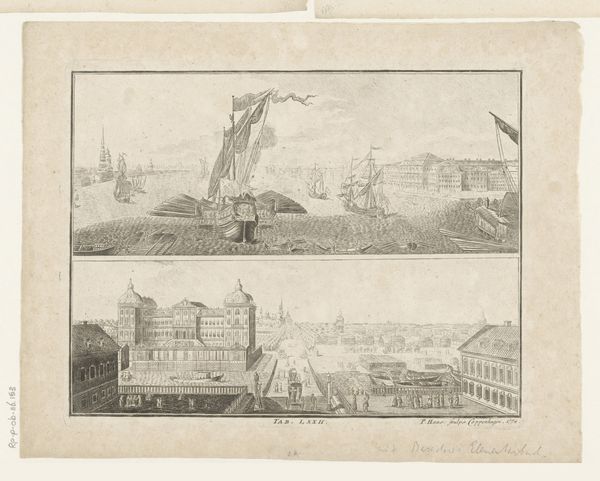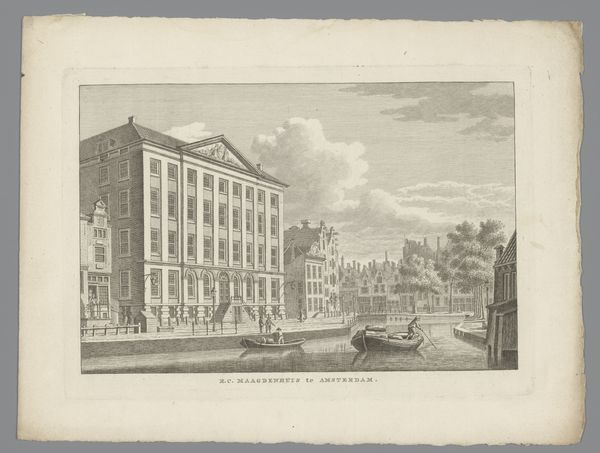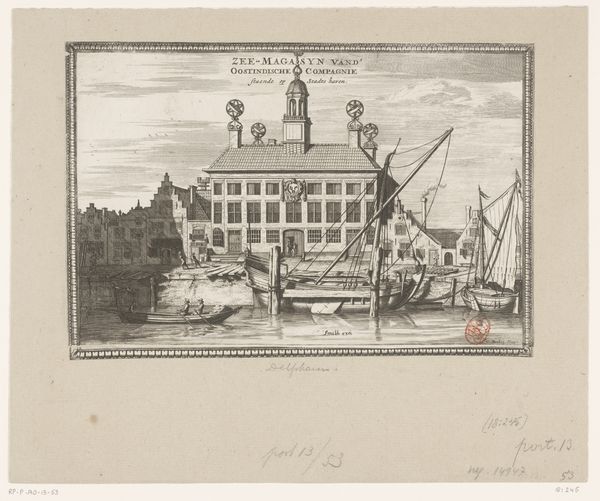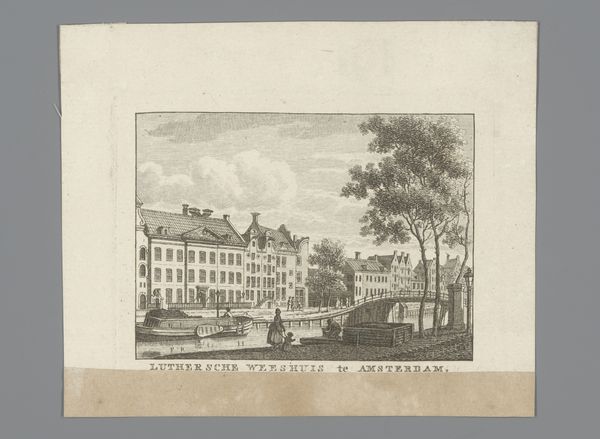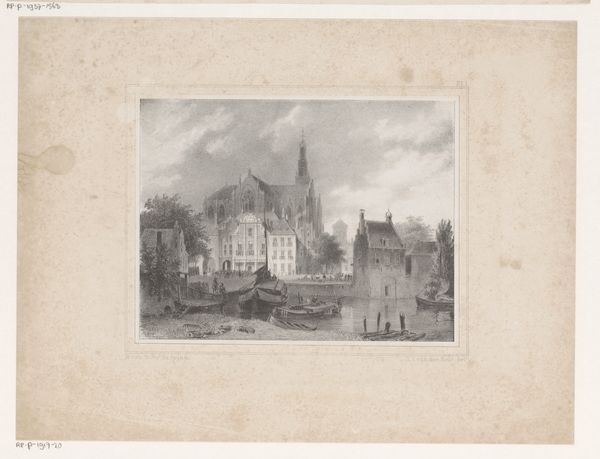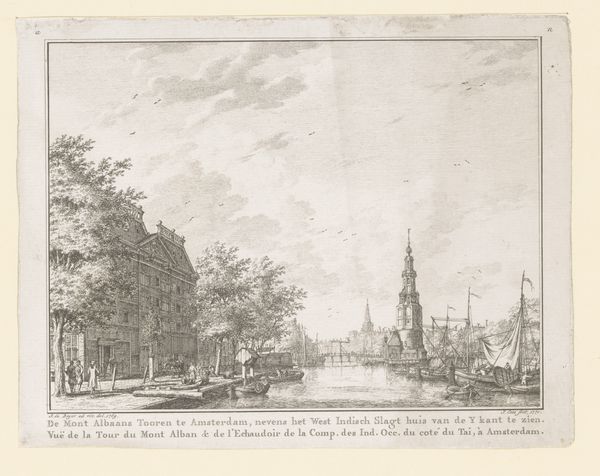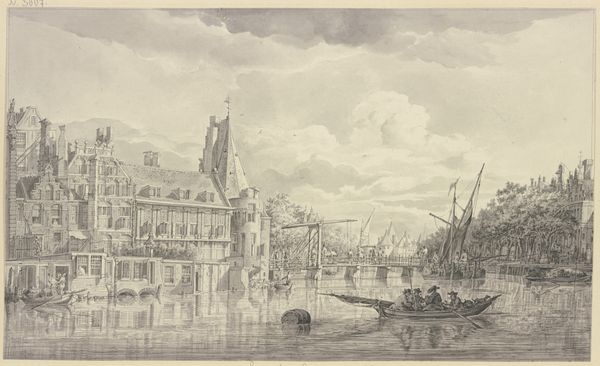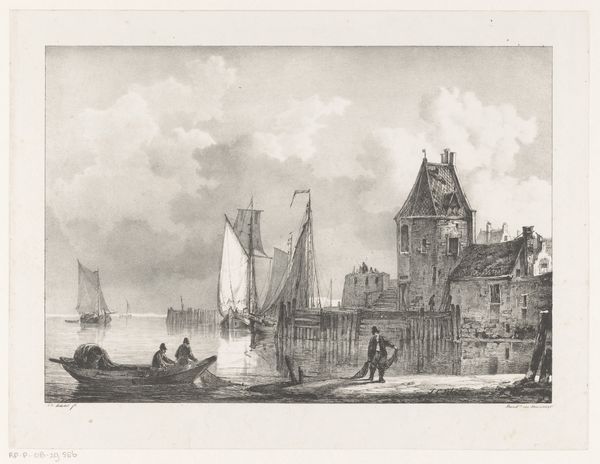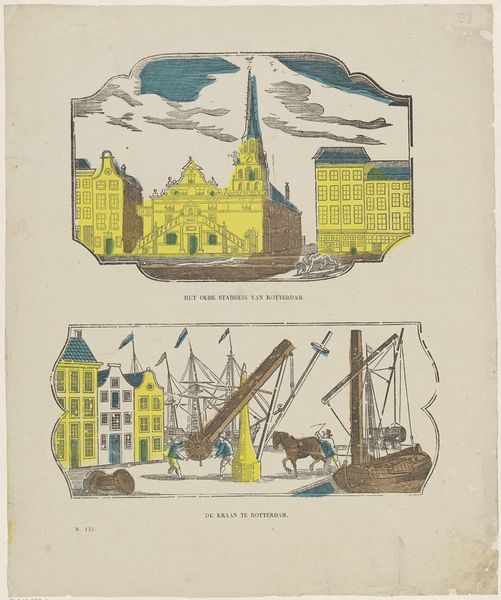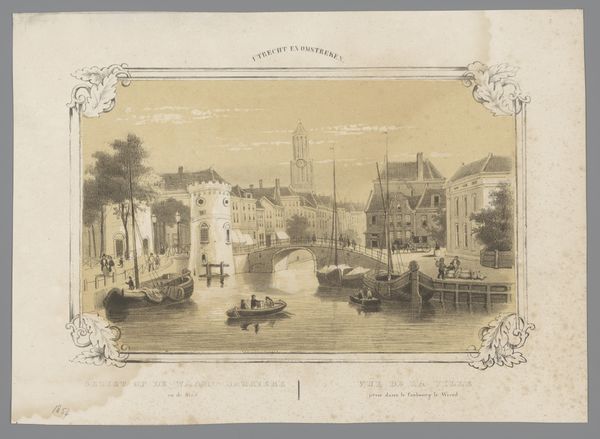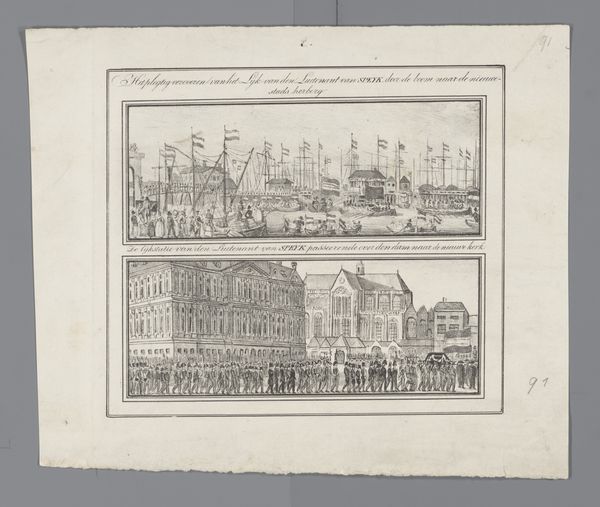
Dimensions: height 200 mm, width 115 mm
Copyright: Rijks Museum: Open Domain
Curator: This print presents us with a fascinating glimpse into Amsterdam's maritime past. Entitled "Oostindisch zeemagazijn en de werf in Amsterdam," it's an engraving, likely created between 1823 and 1902 by Johannes Hilverdink. The image depicts two views: the East India Company warehouse and the shipyard. Editor: Ah, Amsterdam! Just looking at this gives me a whiff of salty air and a sense of busy-ness. The buildings are so orderly, and there’s a kind of subdued energy buzzing around the docks. The whole composition, the stark contrast of black and white, evokes a feeling of sturdy, pragmatic trade...but also I see, through my 21st-century eyes, something far more disturbing. Curator: Exactly. It's difficult to appreciate the architectural beauty and skillful execution without confronting the troubling realities it represents. The East India Company, for instance, was a powerful force inextricably linked with colonial exploitation, with Amsterdam sitting right at the heart of these international operations. Consider how images like this also aided the propaganda of Western superiority during this time period, obscuring all of the terrible exploitation under an appearance of prosperous glory. Editor: Yes, there it is—it feels like a romanticized, idealized depiction that hides the uncomfortable truth. I notice that people are scaled so minutely—are they celebrating the grand scheme of trade, or being overshadowed by it? What about the ones being exploited by this machine of resources and revenue? Curator: That reading opens up possibilities for considering the piece in light of postcolonial studies. It becomes an artifact ripe for re-examination under modern scrutiny of race, power, and the lasting echoes of this commercial project. I believe that Johannes Hilverdink was using his engraving techniques, within a neo-classical idiom, to glorify that burgeoning mercantile mindset in Dutch society, but even that intent has its own backstory. Editor: Makes you think, doesn't it? Beyond just pretty boats and buildings, there’s a deep and thorny history that swirls beneath it all, right down to the bedrock where that warehouse still sits. So next time you’re in Amsterdam, spare a thought—while you're eating your broodje herring—for the complex story written on its bricks and cobblestones. Curator: Indeed. A perfect blend of historical detail, personal experience, and probing political context—that’s the recipe for experiencing this artwork. Thank you.
Comments
No comments
Be the first to comment and join the conversation on the ultimate creative platform.
